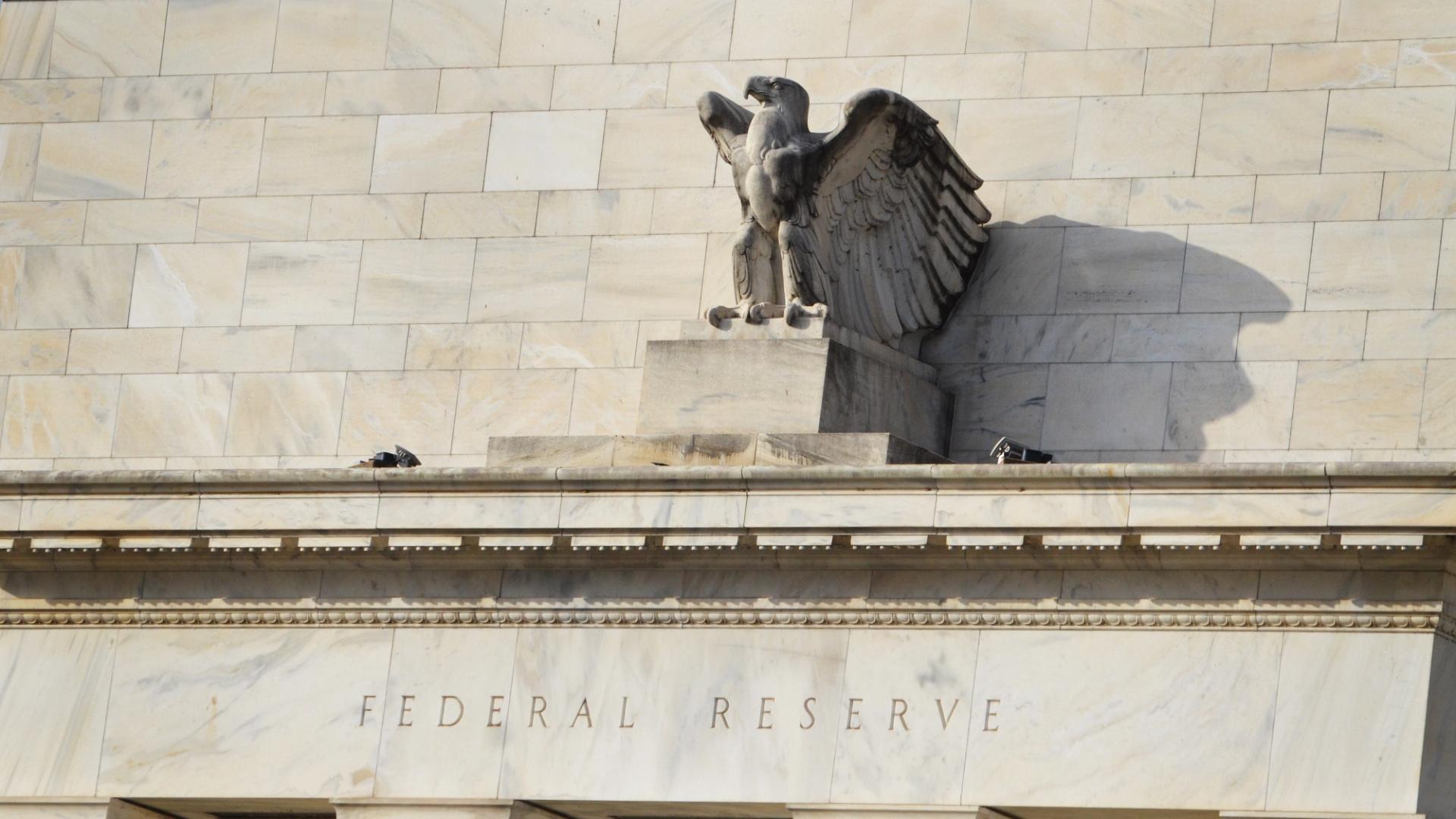Uncategorized
The Ethereum Foundation Has Lost Its Way

The Ethereum Foundation is a paradox. Despite its commitment to decentralization, it operates as a centralized entity, with a director, a treasury, paid developers, and an inner circle. These structures, while necessary for coordination, create tensions with Ethereum’s decentralized ethos.
The Foundation Today
It is not widely known, but the current foundation was constructed in a less than ideal way. The previous director, Ming, was ousted in a coordinated effort by a group of people who have never been publicly identified or held accountable for it. I spoke with Ming days before her removal and she assured me she had no intent of leaving. I was later given information about who was responsible for her removal, but was not given much insight as to why. I have heard that Ming was a bit of a micromanager, and that she had an intensity that rubbed some people the wrong way. I’m sure there’s truth to that, but these stories are often window dressing for deeper truths.
I can infer some good-faith reasons based on the way the org has been run over the past seven years. A very important role of the organization is to protect against internal power struggles as well as external capture. These are noble goals and ones they seem to have accomplished effectively.
Another major focus seems to have been minimizing the public footprint of the organization and constructing it in such a way that it would not draw the ire of governments who might hold them accountable if the political winds shifted against them. But as political winds shift, and the marketplace provides alternatives, the organization itself must adapt, both in form and function.
Ethereum was in its birth a visionary project, not simply technological in nature. It pointed towards a possibility of previously unimaginable futures through the empowerment of the individual to do what had previously taken billions of dollars, thousands of people, or millions of man hours to accomplish.
The Ethereum Foundation, in its current incarnation, designed to minimize threats both internal and external, has lost that vision.
Lead with Vision
Ethereum’s next phase demands more than just technical research and coordinating conferences. It requires visionary leadership — someone who understands not just the technology but its broader social, philosophical, and political implications. This leader must inspire a new generation of builders, connect technology with human needs, and navigate the complexities of the political landscape without compromising Ethereum’s ethos.
Read more: Sam Kessler — Ethereum’s Vitalik Buterin Goes On Offense Amid Major Leadership Shake-up
The Ethereum whitepaper was not just a technical document; it was a beacon that allowed like-minded people to come together under a shared vision. In the face of chaos, uncertainty, and frequent conflicts, it served as a guiding light. What ensured our collective success was not the absence of challenges but the clarity of the mountaintop we were striving toward. This common vision allowed us to stay aligned even when disagreements and setbacks arose.
It was an idea whose time had come—a blueprint that transcended the individuals behind it and inspired a community to persevere, innovate, and ultimately bring that vision to life. Without it, the project could have easily unraveled under the weight of its ambition.
Be Transparent, Focus More on the Community
Transparency is equally critical. Over the past few years, the Foundation has retreated into the shadows, leaving the community feeling disconnected. But ethereum would have been nothing without its community, and it will be nothing if it loses it. A community must be managed, curated, and cared for. It requires the onboarding of new people, with new energy, and new ideas, bound by a common vision. This also includes the teams who build on ethereum.
Seize the Moment
From a legal perspective, Ethereum must embrace the opportunity to engage with lawmakers. The current American political climate is uniquely favorable, and inaction now risks losing momentum. America has elected a President who not only owns ether, but has himself launched a lending protocol on top of it. As of now, we are inhabiting a political landscape which was unthinkable even a year ago, when Democrats surprised so many of us by openly declaring war on crypto, and the future seemed uncertain. There has never been a better time than now to ensure that the promise of crypto is realized.
While maintaining political neutrality, the Foundation can create or promote frameworks that encourage compliance and innovation. Without these frameworks, the crypto space has been plagued by speculative ventures—ICOs, DAOs, NFTs—that skirt regulations rather than working within them to build sustainable use cases.
Lead by Example
The Ethereum Foundation should also consider utilizing its own technology to coordinate its operations and demonstrate the transformative potential of decentralized systems. By adopting Ethereum-based tools and protocols, the Foundation could potentially manage governance, treasury disbursements, decision-making processes, and community engagement.
This approach would not only demonstrate Ethereum’s capabilities but also reinforce trust within the community by embodying the principles of decentralization and transparency that the project champions. Additionally, leveraging Ethereum’s ecosystem for coordination could serve as a real-world case study, inspiring developers and organizations to explore similar solutions. By integrating its technology into its own operations, the Foundation would highlight the real-world utility of the platform while setting a precedent for how decentralized systems can effectively manage complex organizations.
Be Accountable, Build the Future
Finally, financial accountability must become a priority.
With $100 million spent annually, the Foundation should deliver measurable outcomes. Despite significant investment in technical research, user experience in crypto remains stagnant. Improving UX, UI, key management, and other security and usability problems isn’t insurmountable but has been severely neglected. This oversight reflects a blind spot which must be addressed before wider adoption is possible.
Ethereum began as more than just a technological project—it was a visionary movement for empowering individuals to achieve what once required massive resources. That vision is at risk of being lost. To reignite it, the Foundation must embrace transparency, invest in leadership, engage the community, and step into the legal and political spotlight.
Ethereum’s story is one of triumph over chaos, and a testament to the power of collective vision. To ensure its future, the Ethereum Foundation must transform itself from a reactive institution into a proactive visionary force. For ethereum. For the community. For the greater good. For the future.
With Love,
Texture
Uncategorized
BitMEX Co-Founder Arthur Hayes Sees Money Printing Extending Crypto Cycle Well Into 2026

Arthur Hayes believes the current crypto bull market has further to run, supported by global monetary trends he sees as only in their early stages.
Speaking in a recent interview with Kyle Chassé, a longtime bitcoin and Web3 entrepreneur, the BitMEX co-founder and current Maelstrom CIO argued that governments around the world are far from finished with aggressive monetary expansion.
He pointed to U.S. politics in particular, saying that President Donald Trump’s second term has not yet fully unleashed the spending programs that could arrive from mid-2026 onward. Hayes suggested that if expectations for money printing become extreme, he may consider taking partial profits, but for now he sees investors underestimating the scale of liquidity that could flow into equities and crypto.
Hayes tied his outlook to broader geopolitical shifts, including what he described as the erosion of a unipolar world order. In his view, such periods of instability tend to push policymakers toward fiscal stimulus and central bank easing as tools to keep citizens and markets calm.
He also raised the possibility of strains within Europe — even hinting that a French default could destabilize the euro — as another factor likely to accelerate global printing presses. While he acknowledged these policies eventually risk ending badly, he argued that the blow-off top of the cycle is still ahead.
Turning to bitcoin, Hayes pushed back on concerns that the asset has stalled after reaching a record $124,000 in mid-August.
He contrasted its performance with other asset classes, noting that while U.S. stocks are higher in dollar terms, they have not fully recovered relative to gold since the 2008 financial crisis. Hayes pointed out that real estate also lags when measured against gold, and only a handful of U.S. technology giants have consistently outperformed.
When measured against bitcoin, however, he believes all traditional benchmarks appear weak.
Hayes’ message was that bitcoin’s dominance becomes even clearer once assets are viewed through the lens of currency debasement.
For those frustrated that bitcoin is not posting fresh highs every week, Hayes suggested that expectations are misplaced.
In his telling, investors from the traditional world and those in crypto actually share the same premise: governments and central banks will print money whenever growth falters. Hayes says traditional finance tends to express this view by buying bonds on leverage, while crypto investors hold bitcoin as the “faster horse.”
His conclusion is that patience is essential. Hayes argued that the real edge of holding bitcoin comes from years of compounding outperformance rather than short-term speculation.
Coupled with what he sees as an inevitable wave of money creation through the rest of the decade, he believes the present crypto cycle could stretch well into 2026, far from exhausted.
Uncategorized
Bitcoin Bulls Bet on Fed Rate Cuts To Drive Bond Yields Lower, But There’s a Catch

On Sept. 17, the U.S. Federal Reserve (Fed) is widely expected to cut interest rates by 25 basis points, lowering the benchmark range to 4.00%-4.25%. This move will likely be followed by more easing in the coming months, taking the rates down to around 3% within the next 12 months. The fed funds futures market is discounting a drop in the fed funds rate to less than 3% by the end of 2026.
Bitcoin (BTC) bulls are optimistic that the anticipated easing will push Treasury yields sharply lower, thereby encouraging increased risk-taking across both the economy and financial markets. However, the dynamics are more complex and could lead to outcomes that differ significantly from what is anticipated.
While the expected Fed rate cuts could weigh on the two-year Treasury yield, those at the long end of the curve may remain elevated due to fiscal concerns and sticky inflation.
Debt supply
The U.S. government is expected to increase the issuance of Treasury bills (short-term instruments) and eventually longer-duration Treasury notes to finance the Trump administration’s recently approved package of extended tax cuts and increased defense spending. According to the Congressional Budget Office, these policies are likely to add over $2.4 trillion to primary deficits over ten years, while Increasing debt by nearly $3 trillion, or roughly $5 trillion if made permanent.
The increased supply of debt will likely weigh on bond prices and lift yields. (bond prices and yields move in the opposite direction).
«The U.S. Treasury’s eventual move to issue more notes and bonds will pressure longer-term yields higher,» analysts at T. Rowe Price, a global investment management firm, said in a recent report.
Fiscal concerns have already permeated the longer-duration Treasury notes, where investors are demanding higher yields to lend money to the government for 10 years or more, known as the term premium.
The ongoing steepening of the yield curve – which is reflected in the widening spread between 10- and 2-year yields, as well as 30- and 5-year yields and driven primarily by the relative resilience of long-term rates – also signals increasing concerns about fiscal policy.
Kathy Jones, managing director and chief income strategist at the Schwab Center for Financial Research, voiced a similar opinion this month, noting that «investors are demanding a higher yield for long-term Treasuries to compensate for the risk of inflation and/or depreciation of the dollar as a consequence of high debt levels.»
These concerns could keep long-term bond yields from falling much, Jones added.
Stubborn inflation
Since the Fed began cutting rates last September, the U.S. labor market has shown signs of significant weakening, bolstering expectations for a quicker pace of Fed rate cuts and a decline in Treasury yields. However, inflation has recently edged higher, complicating that outlook.
When the Fed cut rates in September last year, the year-on-year inflation rate was 2.4%. Last month, it stood at 2.9%, the highest since January’s 3% reading. In other words, inflation has regained momentum, weakening the case for faster Fed rate cuts and a drop in Treasury yields.
Easing priced in?
Yields have already come under pressure, likely reflecting the market’s anticipation of Federal Reserve rate cuts.
The 10-year yield slipped to 4% last week, hitting the lowest since April 8, according to data source TradingView. The benchmark yield has dropped over 60 basis points from its May high of 4.62%.
According to Padhraic Garvey, CFA, regional head of research, Americas at ING, the drop to 4% is likely an overshoot to the downside.
«We can see the 10yr Treasury yield targeting still lower as an attack on 4% is successful. But that’s likely an overshoot to the downside. Higher inflation prints in the coming months will likely cause long-end yields some issues, requiring a significant adjustment,» Garvey said in a note to clients last week.
Perhaps rate cuts have been priced in, and yields could bounce back hard following the Sept. 17 move, in a repeat of the 2024 pattern. The dollar index suggests the same, as noted early this week.
Lesson from 2024
The 10-year yield fell by over 100 basis points to 3.60% in roughly five months leading up to the September 2024 rate cut.
The central bank delivered additional rate cuts in November and December. Yet, the 10-year yield bottomed out with the September move and rose to 4.57% by year-end, eventually reaching a high of 4.80% in January of this year.
According to ING, the upswing in yields following the easing was driven by economic resilience, sticky inflation, and fiscal concerns.
As of today, while the economy has weakened, inflation and fiscal concerns have worsened as discussed earlier, which means the 2024 pattern could repeat itself.
What it means for BTC?
While BTC rallied from $70,000 to over $100,000 between October and December 2024 despite rising long-term yields, this surge was primarily fueled by optimism around pro-crypto regulatory policies under President Trump and growing corporate adoption of BTC and other tokens.
However, these supporting narratives have significantly weakened looking back a year later. Consequently, the possibility of a potential hardening of yields in the coming months weighing over bitcoin cannot be dismissed.
Read: Here Are the 3 Things That Could Spoil Bitcoin’s Rally Towards $120K
Uncategorized
Are the Record Flows for Traditional and Crypto ETFs Reducing the Power of the Fed?

Record-breaking flows into exchange-traded funds may be reshaping markets in ways that even the Federal Reserve can’t control.
New data show U.S.-listed ETFs have become a dominant force in capital markets. According to a Friday press release by ETFGI, an independent consultancy, assets invested in U.S. ETFs hit a record $12.19 trillion at the end of August, up from $10.35 trillion at the close of 2024. Bloomberg, which highlighted the surge on Friday, noted the flows are challenging the traditional influence of the Federal Reserve.
Investors poured $120.65 billion into ETFs during August alone, lifting year-to-date inflows to $799 billion — the highest on record. By comparison, the prior full-year record was $643 billion in 2024.
The growth is concentrated among the biggest providers. iShares leads with $3.64 trillion in assets, followed closely by Vanguard with $3.52 trillion and State Street’s SPDR family at $1.68 trillion.
Together, those three firms control nearly three-quarters of the U.S. ETF market. Equity ETFs drew the largest share of August inflows at $42 billion, while fixed-income funds added $32 billion and commodity ETFs nearly $5 billion.
Crypto-linked ETFs are now a meaningful piece of the picture.
Data from SoSoValue show U.S.-listed spot bitcoin and ether ETFs manage more than $120 billion combined, led by BlackRock’s iShares Bitcoin Trust (IBIT) and Fidelity’s Wise Origin Bitcoin Trust (FBTC). Bitcoin ETFs alone account for more than $100 billion, equal to about 4% of bitcoin’s $2.1 trillion market cap. Ether ETFs add another $20 billion, despite launching only earlier this year.
The surge underscores how ETFs — traditional and crypto alike — have become the vehicle of choice for investors of all sizes. For many, the flows are automatic.
In the U.S., much of the cash comes from retirement accounts known as 401(k)s, where workers put aside part of every paycheck.
A growing share of that money goes into “target-date funds.” These funds automatically shift investments — moving gradually from stocks into bonds — as savers approach retirement age. Model portfolios and robo-advisers follow similar rules, automatically directing flows into ETFs without investors making day-to-day choices.
Bloomberg described this as an “autopilot” effect: every two weeks, millions of workers’ contributions are funneled into index funds that buy the same baskets of stocks, regardless of valuations, headlines or Fed policy. Analysts cited by Bloomberg say this steady demand helps explain why U.S. equity indexes keep climbing even as data on jobs and inflation show signs of strain.
The trend raises questions about the Fed’s influence.
Traditionally, interest rate cuts or hikes sent strong signals that rippled through stocks, bonds, and commodities. Lower rates typically encouraged risk-taking, while higher rates reined it in. But with ETFs absorbing hundreds of billions of dollars on a set schedule, markets may be less sensitive to central bank cues.
That tension is especially clear this month. With the Fed expected to cut rates by a quarter point on Sept. 17, stocks sit near record highs and gold trades above $3,600 an ounce.
Bitcoin, meanwhile, is trading at around $116,000, not far from its all-time high of $124,000 set in mid August.
Stock, bond and crypto ETFs have seen strong inflows, suggesting investors are positioning for easier money — but also reflecting a structural tide of passive allocations.
Supporters told Bloomberg the rise of ETFs has lowered costs and broadened access to markets. But critics quoted in the same report warn that the sheer scale of inflows could amplify volatility if redemptions cluster in a downturn, since ETFs move whole baskets of securities at once.
As Bloomberg put it, this “perpetual machine” of passive investing may be reshaping markets in ways that even the central bank struggles to counter.
-

 Business11 месяцев ago
Business11 месяцев ago3 Ways to make your business presentation more relatable
-

 Fashion11 месяцев ago
Fashion11 месяцев agoAccording to Dior Couture, this taboo fashion accessory is back
-

 Entertainment11 месяцев ago
Entertainment11 месяцев ago10 Artists who retired from music and made a comeback
-

 Entertainment11 месяцев ago
Entertainment11 месяцев ago\’Better Call Saul\’ has been renewed for a fourth season
-

 Entertainment11 месяцев ago
Entertainment11 месяцев agoNew Season 8 Walking Dead trailer flashes forward in time
-

 Business11 месяцев ago
Business11 месяцев ago15 Habits that could be hurting your business relationships
-

 Entertainment11 месяцев ago
Entertainment11 месяцев agoMeet Superman\’s grandfather in new trailer for Krypton
-

 Entertainment11 месяцев ago
Entertainment11 месяцев agoDisney\’s live-action Aladdin finally finds its stars





